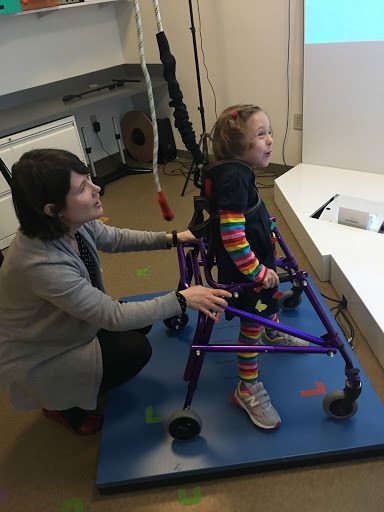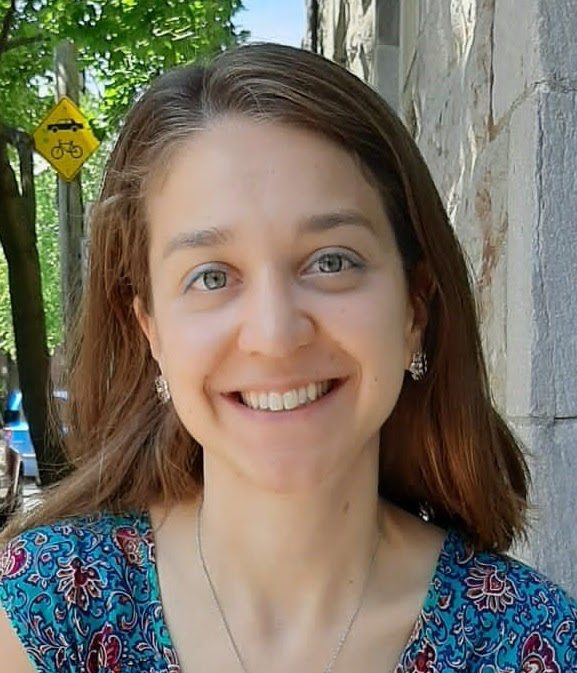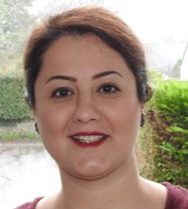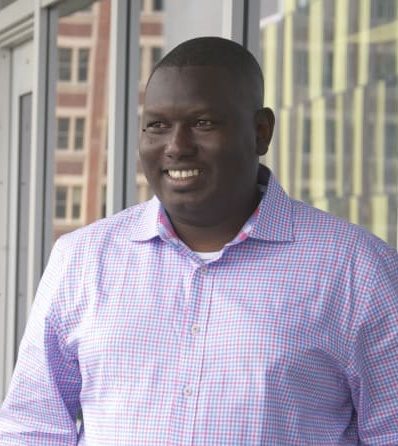Student Portraits
November 8, 2021
Interview with 4 researchers of our community
Danielle Levac
- Associate Professor, Faculty of Medicine – School of Rehabilitation, Université de Montréal
- Researcher, Technopôle en réadaptation pédiatrique, Centre de réadaptation Marie enfant, Centre de recherche du CHU Ste-Justine
What are your research interests?


I am interested in the evidence-based and sustainable integration of digital innovations such as virtual reality and video games into rehabilitation for children and adolescents with disabilities. With a strong foundation in collaboration with clinicians, my goal is to promote the applicability of these technologies to improve the quality of life and well-being of children with disabilities and their families in Canada.
A fun fact about you and/or your motto?
I admit that I am not a big “gamer” myself, but my husband and kids are, and they love to try all the games in my lab! What I find interesting about using games for rehabilitation is the emphasis on active problem solving in engaging and challenging environments to promote learning of real-life transferable skills.
What would be your ideal collaborative research project?
My approach usually begins with involving children, families, and therapists early in the research process so that they can describe their needs and help us understand how and why they might benefit from a particular technology. For example, we may conduct a focus group or involve children and therapists in testing new games to understand how to support their use and help us address issues related to their integration into clinical practice.
How could the fields of animal health and environment be useful to you in your research?
In terms of the environment, I always think about the impact of the built environment on the daily experiences of children with disabilities and their families. One of the potential benefits of using technology is that it can level the playing field for social participation for children with disabilities and their typically developing peers. I also believe that technology can potentially improve access to rehabilitation in the home, which can overcome some of the barriers to interaction with the environment, as well as for families living in remote or rural areas.
Cécile Petitgand
- Coordinator of the data access initiative of the Table nationale des directeurs de la recherche du MSSS: https://tndr-donnees.ca/
- Research Associate at the CHUM Research Centre (CRCHUM)
- Visiting Professor at the School of Public Health of the Université de Montréal (ESPUM)
What are your research interests?


The co-creation of artificial intelligence systems with patients, healthcare professionals and facility managers.
Success factors that ensure the safe and effective use of AI systems in health.
Models for ongoing evaluation of the impacts of AI systems in health care across Canada and around the world.
A “fun fact” about you and/or your motto?
Um… In my previous life, I co-founded an online portal focused on wellness and natural health in Brazil. It was called Lar Natural (The Natural Home) and gathered over 3 million visits per month in 2014! Let’s just say that today, I’m still a bit of a naturopath, natural cosmetic recipe designer, vegetarian… Good habits die hard!
What would be your ideal collaborative research project?
I dream of setting up a podcast called “Health of the future across the world” presenting inspiring models from several cultural spaces (Brazil, India, Japan, South Africa…) and allowing us to (re)build our health systems in the service of wellness and sustainable health, centered on the individual and inscribed in living and working communities.
How could the fields of animal health and environment be useful to you in your research?
Before becoming interested in the field of health, I conducted research in Brazil in the field of preservation of natural spaces (fight against Amazonian deforestation) and management of solid residues (waste, to put it simply :). I am therefore naturally sensitive to these issues that I do not find sufficiently present in our research on health organizations. We need to reconnect health and environment through ambitious research projects, which already exist but certainly lack visibility. I would be passionate about a project that would allow us to co-construct and adapt tools to evaluate the environmental impact of AI systems in health and help developers become more eco-responsible.
Pooneh Maghoul
Associate Professor at Polytechnique Montréal, Founder & Lead at SIGLab
What are your research interests?


- Characterization of natural porous media (natural fabrics).
A fun fact about you and/or your motto?
Before my academic vocation, I was a soccer host on a national radio station! I was part of several soccer teams (university and national). If I had continued along the same lines, I probably could have played with or against Christine Sinclair!
What would be your ideal collaborative research project?
My ideal project is to challenge the status quo to build a better progressive society and solve current social problems. I dream of taking Canada to the moon to build a Canadian-style moon base!
How could the fields of animal health and human health be useful to you in your research?
I apply my knowledge of porous media to characterize biological tissues. For example, we have developed a characterization method based on ultrasound methods to determine the physical and mechanical properties of biological tissues such as cancellous bone. In addition, in a collaborative project, we are trying to study the transfer of nanoparticles through biological barriers such as the placenta.
Abdoulaye Baniré Diallo
- Professor of Computer Science at UQAM, Cofounder and CSO at MIMs Inc.
What are your research interests?


My research interests lie between bioinformatics and artificial intelligence. They focus on algorithms and artificial intelligence methods for the integration and analysis of biological data. In particular, leveraging bioinformatics and artificial intelligence to design predictive models and monitoring of indicators and biomarkers important for pathogen monitoring, grain production and dairy production. I like research that has a strong application component and rapid deployment.
A “fun fact” about you and/or your motto?
Several fun facts. First, I was bad at biology and chemistry in high school and chose computer science majors so I wouldn’t hear about it again, and I find myself working with biologists, agronomists, chemists, and doctors every day 🙂 .
Secondly, I am a Peul (ethnicity recognized as nomadic and cattle breeder) and find myself after taking on advanced studies, returning to research projects in dairy production just like my ancestors.
For me, it is important to note that a bioinformatician is at the service of biological questions to be solved. And I like it when the issues I work on have a direct impact in Québec, Canada and Africa.
What would be your ideal collaborative research project?
An ideal research project is an interdisciplinary project that would focus on how through science, technology and change of practices, we could reconcile agricultural or animal productivity and environmental impacts for food autonomy in Canada. It would be a major interdisciplinary intersection led by human sciences and emerging technologies.
How could the fields of animal health and environment be useful to you in your research?
These fields are large generators of heterogeneous data to be integrated to build predictive models and monitoring tools. For example, algorithms that we have implemented are used to identify and classify pathogens present in samples. We use algorithms to detect lameness problems. We use algorithms to predict health events, the chances of recovery. We are working on a project on animal welfare and longevity of cattle. My team also develops machine learning algorithms to predict soil health indices and to look at the impacts of climate on soil health in Quebec. Our algorithms are also used by researchers who look at the impact of abiotic stresses such as cold and drought on the resistance of certain crops.